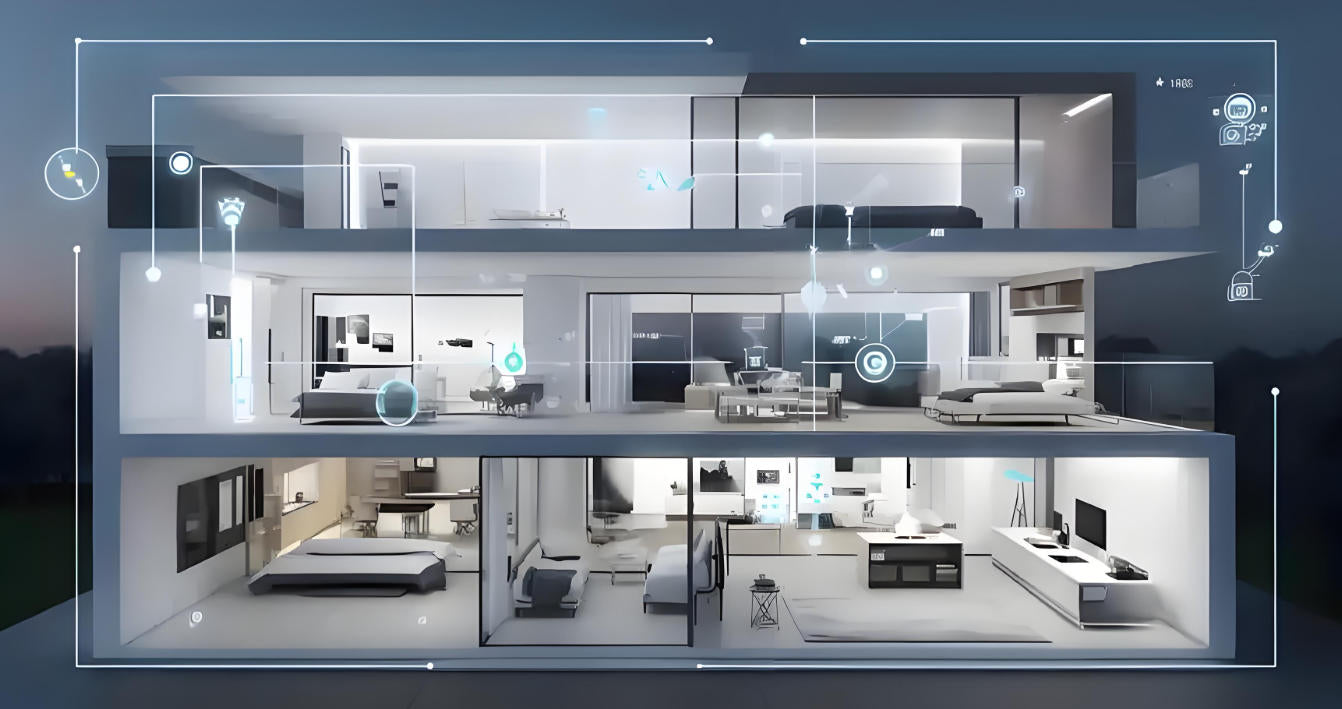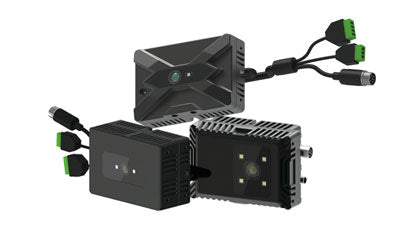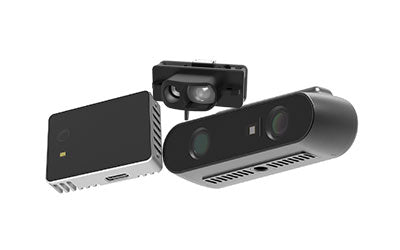TOF in Smart Homes: From Precise Sensing to Intelligent Automation

With the rapid development of smart homes, users increasingly demand intelligent and automated control of their living environments. Traditional home automation systems often rely on simple sensors, such as infrared, ultrasonic, or cameras, but these technologies struggle to achieve high-precision spatial perception and behavior recognition in complex environments. The introduction of TOF (Time-of-Flight) technology provides smart homes with accurate 3D spatial sensing capabilities, laying a solid foundation for automated control.
What sensor can detect distance?
There are several types of sensors designed to detect distance, including distance detectors, distance sensors, distance sensing sensors, and distance measurement sensors. In advanced applications, LiDAR sensors and laser distance sensors are commonly used, which emit light pulses and measure the reflection time to calculate precise distances. Tools like a laser measure ruler also leverage similar principles for accurate distance measurement. These devices are widely applied in robotics, drones, smart devices, industrial automation, and construction because an advantage of a laser measuring tool is that it provides high precision and fast distance detection, even in complex environments.
1. The Need for Spatial Perception in Smart Homes
The core of smart home systems lies in accurately perceiving user location and behavior to enable intelligent and automated environmental adjustments. Precise TOF spatial perception not only affects device responsiveness but also determines the comfort and safety of the home experience. For instance, smart lighting can detect the number and position of people in a room, automatically adjusting brightness and color temperature to achieve both energy efficiency and comfort. Security cameras can monitor human activity in real-time, detect abnormal behavior or potential intrusions, and trigger alerts or protective measures promptly.
However, traditional sensors such as infrared detectors, ultrasonic sensors, or standard cameras have limitations in practice. They are prone to misjudgment under complex lighting conditions (such as direct sunlight, shadows, or low-light nighttime scenarios). When multiple people or objects move simultaneously within a room, these sensors struggle to determine exact positions and actions. These limitations prevent traditional smart home devices from meeting user expectations for high-quality automated experiences in terms of accuracy and responsiveness.
TOF (Time-of-Flight) technology measures the time it takes for light pulses to travel to an object and back, accurately capturing depth information and spatial structure. Compared with traditional 2D sensors, TOF can generate real-time 3D spatial data even in complex environments, precisely recognizing user positions, motion trajectories, and interaction intentions. Whether multiple people are active in a room or the lighting conditions are challenging with dense furniture layouts, TOF spatial sensing maintains high-precision perception, significantly enhancing the automation and reliability of smart homes. With TOF technology, smart home devices can intelligently perceive environmental changes and respond swiftly, realizing a truly “understanding your needs” home experience.
2. The Role of TOF in Spatial Modeling and Environmental Perception
TOF technology generates real-time, high-precision depth maps, providing smart home systems with accurate 3D spatial data. These depth data not only reflect the spatial positions of objects and people in a room but also capture dynamic changes, enabling devices to “see and sense” their environment. Unlike traditional 2D cameras, which only capture flat images, TOF provides per-pixel depth information, allowing for true 3D reconstruction of the real world and supporting smarter, more reliable home applications.
Based on TOF depth data, smart home devices can achieve various scenario-based applications:
-
Intelligent Lighting Control: TOF can detect the number, position, and movement of people in real-time. Lighting systems automatically adjust brightness, color temperature, and illumination direction based on this information. For example, lights can follow users as they move around a room, and unoccupied areas can automatically turn off lights, achieving energy savings and comfort.
-
Environmental Monitoring: TOF spatial sensing can detect subtle changes in the home environment, such as furniture movement, door/window status, item placement, or people entering and leaving. The system generates real-time spatial models, anticipates potential risks, or alerts users, ensuring safety and convenience.
-
Security Systems: Combined with AI algorithms, TOF depth information can accurately distinguish real intrusions from pet movements or other non-threatening actions, significantly reducing false alarms. The system analyzes human movement patterns, trajectories, and depth contours, functioning reliably even at night or under complex lighting, enabling 24/7 security monitoring.
Moreover, TOF technology maintains high-precision sensing even under low light, strong light, or shadowed environments, overcoming the limitations of traditional 2D cameras. This enables smart home devices to perceive environmental changes reliably around the clock, providing strong technical support for automated control, energy management, and security protection.
Through TOF-enabled spatial sensing, smart homes move beyond simple switch-based triggers and can understand spatial conditions and user behavior in real-time, achieving a truly intelligent and automated living experience.
3. Typical Products and Solution Analysis
TOF technology has been widely adopted in various smart home devices and systems, bringing more intelligent and efficient experiences to home life. Typical product applications include:
-
Robotic Vacuum Cleaners: Equipped with TOF sensors, modern robotic vacuums can scan home environments in real-time and generate accurate 3D maps. By analyzing TOF depth data, robots recognize furniture, walls, and obstacles, plan optimal cleaning routes, and avoid collisions. TOF supports dynamic obstacle avoidance, allowing robots to adjust paths even if people are moving in the room. Combined with AI, these robots remember room layouts for customized cleaning and area management.
-
Smart Security Cameras: TOF sensors allow security cameras to capture depth information, enabling precise human detection, motion tracking, and intrusion alerts. Cameras can distinguish between humans and pets or other objects, reducing false alarms. TOF depth sensing remains reliable in low-light or complex lighting environments, supporting multi-angle monitoring and remote alerts.
-
Smart Appliances: Devices such as air conditioners, lights, and curtains can leverage TOF data for intelligent automation. For example, lighting systems adjust brightness and color temperature based on user location and activity; air conditioners modify airflow and temperature according to the number and position of occupants; curtains open or close in response to light changes. TOF technology enables devices to sense the environment and user behavior, achieving truly “smart operation” while optimizing energy consumption and improving comfort.
These applications demonstrate that TOF smart homes improve convenience, interaction, safety, and energy management. As TOF technology integrates further with AI, future smart homes will achieve more precise, personalized automated control, offering users a comfortable, safe, and efficient living environment.
4. Technical Challenges and Solutions
Despite its potential, deploying TOF technology in smart homes presents several challenges:
-
Complex Lighting Conditions: Diverse lighting, including direct sunlight, reflective surfaces, and dim nighttime conditions, affects TOF depth measurement. Manufacturers combine AI with TOF depth data for lighting compensation and depth correction using adaptive exposure and multi-frame fusion.
-
Privacy Protection: TOF smart homes involve sensitive spatial and behavioral data. Local processing on devices reduces cloud transmission, while encryption and access control protect privacy. Users can customize privacy settings for a secure experience.
-
Massive Data Processing: TOF cameras generate large data volumes, requiring efficient local processing. Edge computing and AI algorithms optimize data handling, reduce latency, and improve response times for gesture recognition, motion tracking, and environmental sensing.
With optimized hardware (high-precision TOF sensors and intelligent light sources), improved algorithms (AI depth compensation, edge computing), and strict data security measures, TOF smart home systems maintain high-precision sensing even in complex environments, providing stable, intelligent, and reliable experiences.
5. Future Trends: TOF + AIoT Driving a Smart Home Ecosystem
With AIoT, smart homes are entering a new era. TOF technology combined with multi-sensor fusion forms the core for an adaptive, full-scene smart home ecosystem:
-
Scenario-Based Self-Learning: Using high-precision TOF depth data, systems monitor occupants and environment in real-time. AI analyzes behavior patterns to predict needs, adjusting lighting, curtains, and HVAC automatically, creating a “touchless control” experience.
-
Upgraded Intelligent Control: TOF spatial perception supports micro-movement and gesture recognition, enabling precise automation. Lights, curtains, music, and HVAC adjust intelligently based on user activity. AI integration improves security by distinguishing abnormal intrusions from pets.
-
Multi-Device Collaboration: TOF sensors collaborate with devices like speakers, purifiers, and robotic vacuums for full-home optimization. Multi-device coordination ensures a comfortable, safe, and efficient home environment.
Through TOF+AIoT integration, smart homes shift from passive response to proactive prediction, delivering natural, efficient, and intelligent experiences. Advances in low-power TOF technology, edge computing, and AI enable all-time, full-scene perception and control, making TOF smart homes the hub of intelligent living.
Conclusion
TOF-enabled smart homes are reshaping modern living. High-precision TOF spatial perception and automated control allow devices to sense the environment and user behavior proactively, enhancing safety, comfort, and interaction. With AIoT, future smart homes will leverage TOF technology to achieve a complete intelligent control loop, delivering truly smart living.
Synexens 3D Of RGBD ToF Depth Sensor_CS30
Our professional technical team specializing in 3D camera ranging is ready to assist you at any time. Whether you encounter any issues with your TOF camera after purchase or need clarification on TOF technology, feel free to contact us anytime. We are committed to providing high-quality technical after-sales service and user experience, ensuring your peace of mind in both shopping and using our products.






